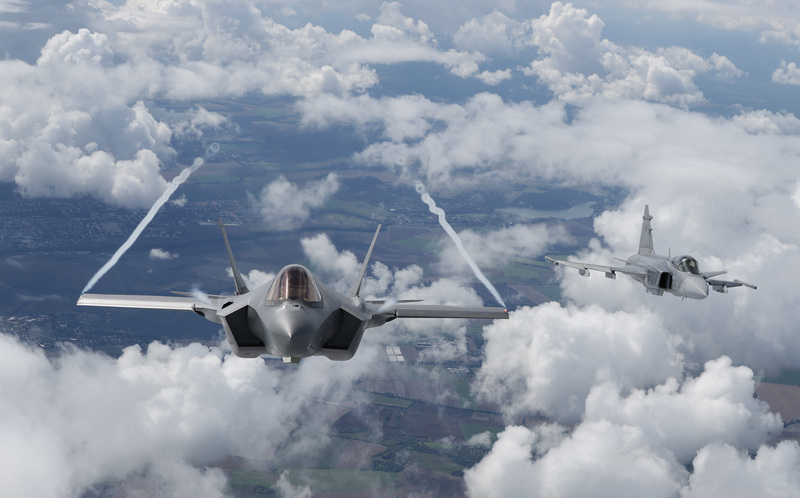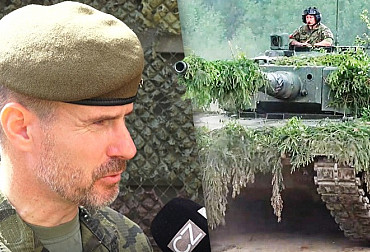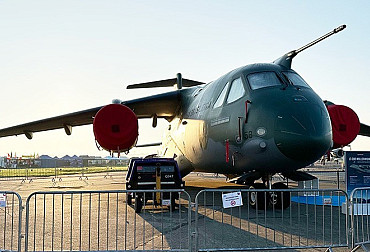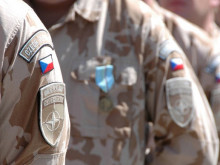Czech Republic will be the only one in NATO to be able to fly both Gripen and F-35
Thanks to the approved deliveries of the American F-35 fighter jets and the retiring Swedish JAS-39 Gripen, the Air Force will be the only one in the North Atlantic Alliance with pilots who know the details of both aircraft. The only other NATO partner using Gripens - Hungary - is not yet considering an upgrade to the 5th generation fighter. Moreover, Budapest has not yet approved Sweden's application for NATO membership, so negotiations around extending the current contract for Swedish fighters may be one of Viktor Orbán's government's conditions.
When the Czech Republic was selecting a successor to its aging MiGs in 2001, concerns about the cost of operation and acquisition prevailed, and the political situation also played a role. We were the first in Europe outside our home country of manufacture to go for the cheaper Swedish Saab JAS-39 Gripen variant, which had no combat experience behind it but seemed the best option according to the government of the day. And our leadership in this regard has lasted almost to this day on the old continent with the only other operator in the regular army being Hungary, and subsequently the UK, which uses the machines for training pilots at its Empire Test Pilots' School.
But times have moved on, challenges have shifted and the need for air defence in the Czech Republic is more pressing than ever, not least because of Russian aggression in Ukraine. Although the government has approved the purchase of 24 Lockheed Martin F-35A Lightning II aircraft, we will have to wait a few more years for their delivery.
The Czech Republic is now negotiating with a Swedish government agency to extend the Gripen lease until 2035, so the program will continue to evolve in the years to come. "Mutual sharing of experience and joint operational training deepens the ties between nations and significantly helps to strengthen collective security," Air Force Commander Major General Petr Čepelka said after a recent meeting in Sweden.

In the years to come, the main focus will be on the modernisation of the current squadron of 14 Gripen aircraft and the focus on a new strategy, where our army wants to focus on dispersal operations and agile combat deployment, i.e. the ability to react quickly and flexibly to sudden changes in the security situation and the ability to disperse forces and resources over a larger area (the ability to operate from bases other than the main operating bases if necessary).
"The Swedes have a lot of experience in this area; it was a neutral country. They had to solve how they would be able to defend themselves in case of an attack until someone came to their aid," said Major Aleš Svoboda, a fighter pilot with the Czech Air Force Command, after the Uppsala meeting. "Having all the aircraft in one place is an easy target, scattering them over a certain area is obviously more advantageous," explained Major Svoboda.
The continued program with Swedish aircraft, along with the acquisition of F-35s, is a unique combination within the Alliance that none of the allies have yet. "We will be the only country to have insight into the operational use of both the F-35 and the JAS-39 Gripen. We will be extremely valuable to our allies because if we fly both types of aircraft on a joint operation, we will know what to expect from the Gripens and how to work with them," said Maj. Svoboda.

Outside of Europe, only Brazil, South Africa and Thailand have gripens in their equipment. Sweden's most important partner, or rather Saab's customer on our continent, is the aforementioned Hungary, which, like the Czech Republic, operates 14 JAS-39 Gripen aircraft and apparently intends to continue the partnership and does not plan to modernise its air force by acquiring F-35s. At the beginning of 2022, Saab upgraded the current Hungarian squadron with MS20 Block 2 software modules, which the Czech army received the same year.
Hungary may thus be Sweden's only major European partner for new contracts for Swedish JAS-39 Gripen aircraft in the future. Hungary is also the last NATO member country that has not yet ratified Sweden's accession to the Alliance. Viktor Orbán was overtaken in this respect by Turkish President Recep Erdogan, and the reward was not long in coming - in response, the United States unblocked the long-gestating sale of F-16 fighter jets to Ankara.
Hungary's reward in this respect could be the expansion of the existing squadron of Gripen fighters and the promise of modernisation for many years to come. "Fighter jets could be a decisive bargaining chip," Anna Wieslander, director for Northern Europe at the Atlantic Council think tank, told Reuters on the situation regarding Hungary's approval of Sweden's NATO membership. "Given Hungary's existing JAS-39 Gripen lease contract, its possible extension or expansion is in play," Wieslander added. The Hungarians have not yet publicly announced their possible demands in exchange for membership ratification, but in any case, according to the latest information, the Hungarian parliament could approve Sweden's application to join the North Atlantic Alliance as early as the end of the month. "We are very pleased that Turkey has completed its ratification process and we expect Hungary to follow soon," Swedish Foreign Minister Tobias Billström said in a recent speech to the local parliament, maintaining optimism towards Hungary.





















